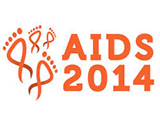 Accelerating the response to the global HIV epidemic requires targeting key affected populations and tailoring efforts around geographic particulars, and it should involve amped up testing and treatment for the virus, aidsmap reports. Salim Abdool Karim, MD, PhD, director of the Centre for the AIDS Programme of Research in South Africa (CAPRISA), addressed members of the 20th International AIDS Conference (AIDS 2014), focusing on the running theme of the conference: “stepping up the pace.”
Accelerating the response to the global HIV epidemic requires targeting key affected populations and tailoring efforts around geographic particulars, and it should involve amped up testing and treatment for the virus, aidsmap reports. Salim Abdool Karim, MD, PhD, director of the Centre for the AIDS Programme of Research in South Africa (CAPRISA), addressed members of the 20th International AIDS Conference (AIDS 2014), focusing on the running theme of the conference: “stepping up the pace.”
A UNAIDS report published in advance of the conference found that 54 percent of people living with HIV around the world are unaware of their serostatus. Last year saw 2.1 million new infections and 1.5 million HIV-related deaths. The report also detailed how HIV disproportionately affects specific geographic areas. Eighty percent of HIV cases are in 20 countries, with one third in South Africa, Nigeria and India.
Karim said that controlling the epidemic is a more realistic goal than reaching for the aspirational “end of AIDS.” Controlling the epidemic would mean keeping HIV from being the leading cause of death in particular areas. It is also vital to ensure that each new HIV case leads to an average of less than one new case. Mathematical modeling suggests that the scientifically proven interventions of male circumcision, early treatment of HIV (treatment as prevention, or TasP) and pre-exposure prophylaxis (PrEP) could collectively help reduce the average of three “onward transmissions” to less than one.
To harness the power of such interventions, they should be tailored to local epidemics, which requires detailed surveillance, Karim said. Interventions need to address the needs of “key populations” disproportionately affected by HIV, such as men who have sex with men (MSM) and sex workers. Such efforts should take place in tandem with efforts to address sociocultural elements driving the epidemic in those key populations, such as stigma, legal barriers and the burdens of gender norms.
To read the aidsmap story, click here.
To see the conference slides, click here.
Advertisement
Advertisement
Advertisement






Comments
Comments